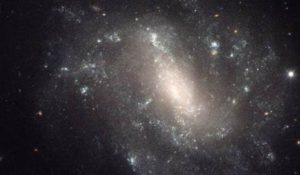
On Thursday, The Laser Interferometer Gravitational-wave Observatory (LIGO) announced that it has detected gravitational waves for third time. These waves were created with merging of two black holes about three billion light years away, and were detected by LIGO in the US on January 4, 2017. The latest detection of gravitational waves has been named GW170104 by the scientists.
Gravitational waves are the ripples in the fabric of space-time that are produced by violent events in the Universe, such as merging of black holes and neutron stars. Waves produced by accelerating masses are believed to propagate at the speed of light.
“Our handful of detections so far is revealing an intriguing black hole population we did not know existed until now,” said Northwestern University’s Vicky Kalogera, a senior astrophysicist with the LIGO Scientific Collaboration (LSC).
Last December, LIGO had detected gravitational waves for the second time. These waves were detected on December 25, 2016. Earlier, in February 2016, LIGO scientists had announced first detection of a large space-time ripple at LIGO labs in Livingston, Louisiana and Hanford, Washington. This ripple was detected on September 14th, 2015, and according to scientists, it had originated from the final stages of two merging black holes, weighing 29 and 36 solar masses and located about 1.3 billion light years from Earth.
The waves detected on Boxing Day emanated from the spinning dance of a binary black hole pair – weighing 8 and 14 solar masses – and on the brink of merging. They were located about 1.4 billion light years from Earth, and their merger created another black hole 21 times the mass of the sun, with rest of the mass transforming into a gravitational energy. This energy was sensed by the laser interferometers of the LIGO labs in Livingston, Louisiana, and Hanford, Washington State on 25 December (03:38 GMT, 26 Dec; Boxing Day in Europe).
“With the third definite detection of from a coalescing black hole binary, we have discovered a new class of astrophysical sources to test Einstein’s theory of general relativity in extreme conditions,” Bala Iyer, the Principal Investigator of the Indian team in LIGO said.
The third event, according to the Times of India, “was produced by the merger of two black holes, 31 and 19 times as massive as the Sun, forming a larger black hole of about 49 solar masses. Also, the data suggests that at least one of the black holes in this binary system might have been spinning in a direction that is not completely aligned with the orbital rotation of the binary, providing potential clues on how these binaries might have formed.”
The third detection of gravitational waves has been described in a new paper accepted for publication in the journal Physical Review Letters.